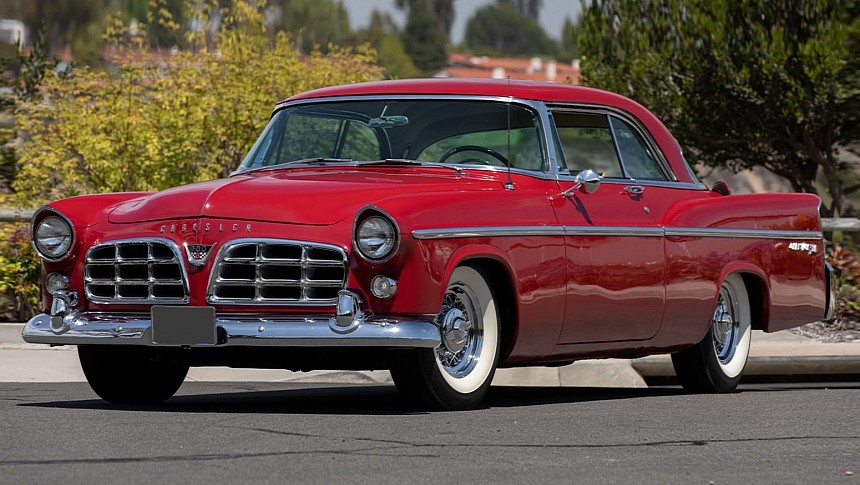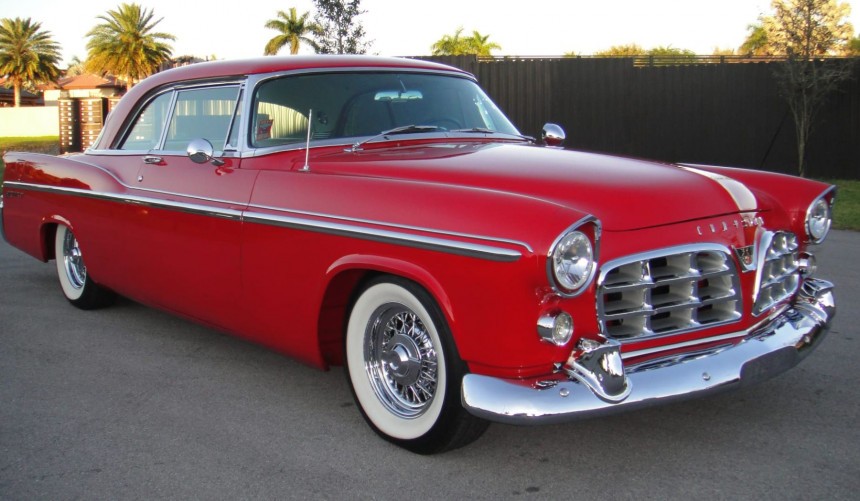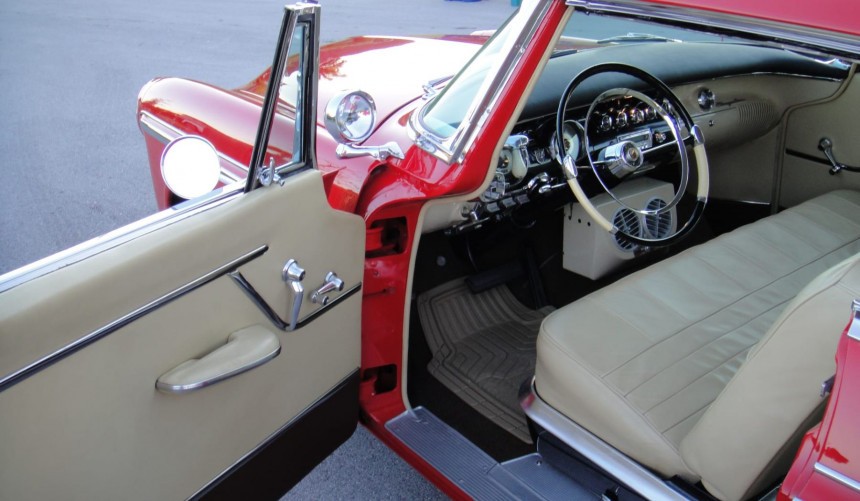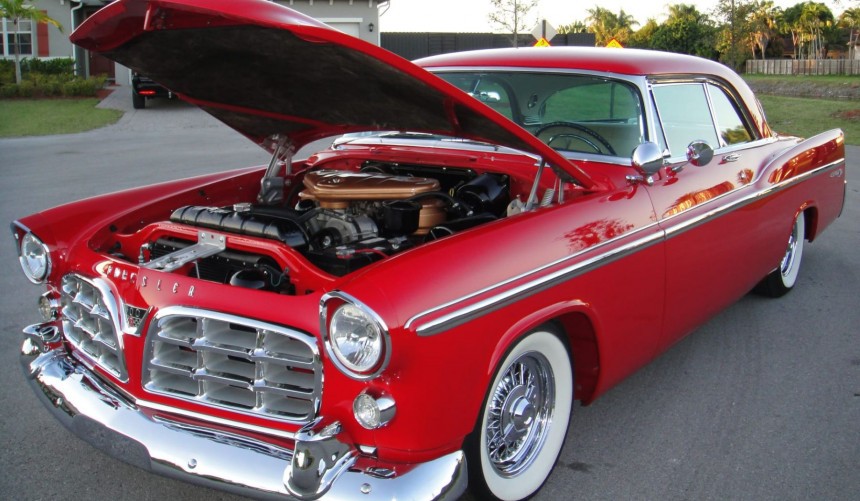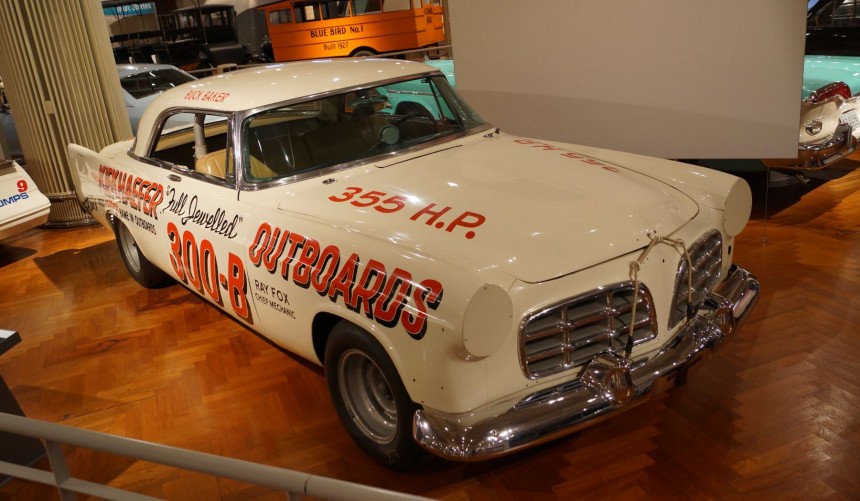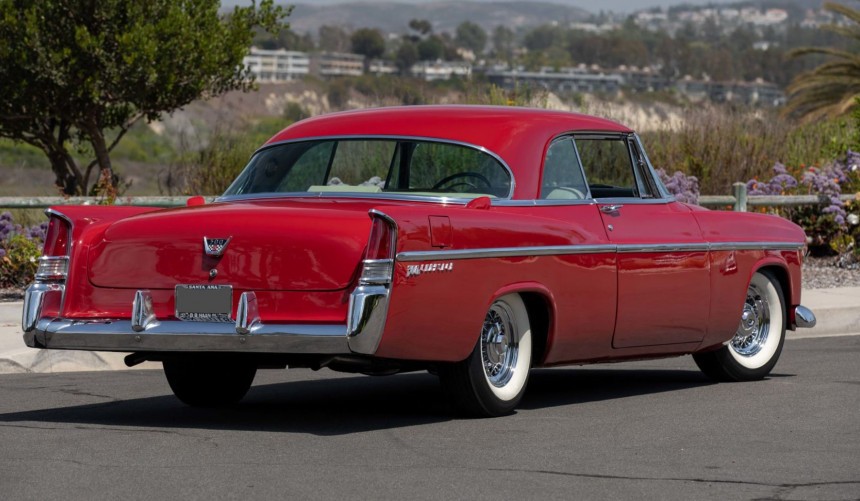A decade before 426 HEMI-powered intermediates were unleashed on public roads, becoming instant muscle car legends, the Chrysler Corporation made headlines with another HEMI-powered, high-performance vehicle: the mighty 300B.
Today, Chrysler (as a carmaker) seems to have lost its mojo, with its US lineup only featuring an outdated sedan and an upscale minivan.
In the past, however, some of the finest, most powerful American luxury cars donned Chrysler badges.
That was the case in the first part of the 1950s when the carmaker produced models like the New Yorker, Imperial, and 300 (codenamed C-300).
The latter was introduced in 1955, and although it was an elegant gran touring-style coupe aimed at the personal luxury car segment, the main reason for its development was to homologate a new car for NASCAR.
Named after the amount of horsepower its FirePower HEMI V8 could produce, the C-300 was the first in a long line of ever-more-powerful Chryslers dubbed the 300 letter series.
Though eleven lettered 300s followed (twelve if we count the 1970 300 Hurst), the 1956 300B remains one of the most famous and sought-after members of the series.
Like its predecessor, the 300B was designed by Virgil Exner and Robert MacGregor Rodger. The model continued to use numerous components from existing Chrysler models, yet it was a major improvement across the board.
The car received visual refinements, new amenities that made it more luxurious, a 12-volt electrical system, bigger brakes, and a larger-displacement HEMI engine that made it more powerful.
Though very similar to the C-300, the new model's exterior received just the right amount of subtle upgrades to make it look even more elegant, like the brand-new, jet age-inspired tailfins that rose from the quarter panels.
Meanwhile, available creature comforts included power steering and front brakes, power windows, a power bench seat, a gas heater, air conditioning, multispeed wipers, and a lavish steering wheel-mounted clock.
The 300B also debuted the novel Highway Hi-Fi audio system. Designed and developed by Peter Goldmark, it allowed occupants to play vinyl records inside the car - albeit special, smaller-diameter records produced specifically for the system.
While the 300B was capable of race car performance figures, its interior prioritized comfort and luxury, like a proper European grand tourer.
The bench seats and dashboard were upholstered in quality leather, while all the trims, switches and buttons were fabricated from chromed metal.
When the C-300 with its 331-ci (5.4-liter) HEMI was introduced a year earlier, it became the first American car to make 300 hp, but for its successor, Chrysler had even bigger plans.
The FirePower V8 with hemispherical combustion chambers was enlarged to 354 ci (5.8 liters). In addition, the crankshaft was now forged and hardened, while the compression ratio also went up.
In the standard configuration, the engine was rated at 340 hp, a healthy 40 hp increase for what was already a very potent engine.
Even more impressive, customers could choose an optional higher-compression-ratio version of the 354 ci FirePower that could make 355 hp.
In the latter configuration, the 300B was the first US-built production car to make one horsepower per cubic inch and one of the world's fastest, most powerful production cars at the time of its release.
It could sprint to 60 mph (97 kph) from a standstill in about 9 seconds, and, during a test conducted at Daytona in 1956, it reached a top speed of 139.9 mph (225.14 kph).
Like the C-300, the new 300B was taken to the track for more than high-speed tests.
During the 1956 season, NASCAR team owner Carl Kiekhaefer brought several examples and raced them in the Grand National Series.
Except for some minor modifications like hood latches and headlight covers, the stock 300B racked up 22 wins in 41 races, of which 16 victories came consecutively.
Moreover, the car helped Hall of Famer Buck Baker win his first Grand National Series title that season.
This legendary car was only produced during the 1956 model year in 1,102 units that were sold with a starting price of $4,242 ($46,978 in 2023 money).
Today, surviving models are one of the most saught-after American cars built during the 1950s.
According to classic.com, the average value for a well-kept example currently stands at $126,270.
A few months ago, a 300B donning a unique body became the most expensive example ever sold, fetching $1,105,000 at a RM Sotheby's auction.
The bespoke 300B was commissioned by Italian industrialist Giovanni "Gianni" Agnelli, and its exquisite body was coachbuilt by Carrozzeria Boano in Italy.
Though not the first or the most potent of the 300 letter series, the Chrysler 300B remains one of its most famous and sought-after members.
Almost seven decades after its introduction, it remains a gorgeous and surprisingly capable luxury car - something that, unfortunately, Chrysler has ceased to produce.
If you want to see one of the surviving examples of this legendary car in action, we recommend watching the YouTube video below by Lou Costabile.
In the past, however, some of the finest, most powerful American luxury cars donned Chrysler badges.
That was the case in the first part of the 1950s when the carmaker produced models like the New Yorker, Imperial, and 300 (codenamed C-300).
The latter was introduced in 1955, and although it was an elegant gran touring-style coupe aimed at the personal luxury car segment, the main reason for its development was to homologate a new car for NASCAR.
Named after the amount of horsepower its FirePower HEMI V8 could produce, the C-300 was the first in a long line of ever-more-powerful Chryslers dubbed the 300 letter series.
An improvement all across the board
Like its predecessor, the 300B was designed by Virgil Exner and Robert MacGregor Rodger. The model continued to use numerous components from existing Chrysler models, yet it was a major improvement across the board.
The car received visual refinements, new amenities that made it more luxurious, a 12-volt electrical system, bigger brakes, and a larger-displacement HEMI engine that made it more powerful.
Luxury galore
Meanwhile, available creature comforts included power steering and front brakes, power windows, a power bench seat, a gas heater, air conditioning, multispeed wipers, and a lavish steering wheel-mounted clock.
The 300B also debuted the novel Highway Hi-Fi audio system. Designed and developed by Peter Goldmark, it allowed occupants to play vinyl records inside the car - albeit special, smaller-diameter records produced specifically for the system.
While the 300B was capable of race car performance figures, its interior prioritized comfort and luxury, like a proper European grand tourer.
The bench seats and dashboard were upholstered in quality leather, while all the trims, switches and buttons were fabricated from chromed metal.
One of the fastest, most powerful production cars available in 1956
The FirePower V8 with hemispherical combustion chambers was enlarged to 354 ci (5.8 liters). In addition, the crankshaft was now forged and hardened, while the compression ratio also went up.
In the standard configuration, the engine was rated at 340 hp, a healthy 40 hp increase for what was already a very potent engine.
Even more impressive, customers could choose an optional higher-compression-ratio version of the 354 ci FirePower that could make 355 hp.
In the latter configuration, the 300B was the first US-built production car to make one horsepower per cubic inch and one of the world's fastest, most powerful production cars at the time of its release.
It could sprint to 60 mph (97 kph) from a standstill in about 9 seconds, and, during a test conducted at Daytona in 1956, it reached a top speed of 139.9 mph (225.14 kph).
A dominant NASCAR career
During the 1956 season, NASCAR team owner Carl Kiekhaefer brought several examples and raced them in the Grand National Series.
Except for some minor modifications like hood latches and headlight covers, the stock 300B racked up 22 wins in 41 races, of which 16 victories came consecutively.
Moreover, the car helped Hall of Famer Buck Baker win his first Grand National Series title that season.
The Chrysler 300B today
Today, surviving models are one of the most saught-after American cars built during the 1950s.
According to classic.com, the average value for a well-kept example currently stands at $126,270.
A few months ago, a 300B donning a unique body became the most expensive example ever sold, fetching $1,105,000 at a RM Sotheby's auction.
The bespoke 300B was commissioned by Italian industrialist Giovanni "Gianni" Agnelli, and its exquisite body was coachbuilt by Carrozzeria Boano in Italy.
Though not the first or the most potent of the 300 letter series, the Chrysler 300B remains one of its most famous and sought-after members.
Almost seven decades after its introduction, it remains a gorgeous and surprisingly capable luxury car - something that, unfortunately, Chrysler has ceased to produce.
If you want to see one of the surviving examples of this legendary car in action, we recommend watching the YouTube video below by Lou Costabile.
